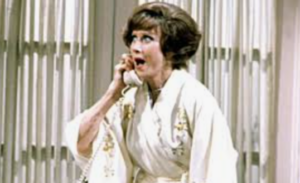
Soap operas reflect the changing status of cannabis
Soap operas reflect and influence opinions in unexpected ways.
Since their first appearance in 1949, they have captivated the public's imagination. Whether night or day, the stories of sex, power, love, betrayal and more captivated and entertained viewers. Daytime soap operas are addictive and a part of what the country thought until streaming premiered. And so soap operas reflect the changing status of cannabis. “All My Children,” “One Life to Life,” “Days of our Lives,” and more formed legions of fans who grappled with some of the topics that were openly discussed in a comfortable atmosphere. The approach to birth control, war, divorce, drug use, mixed relationships and more has evolved and continues to reflect current public opinion. Nearly 90% of Americans believe cannabis should be legal in some form, and AARP believes it has benefits. And soap operas were involved in the change.
Historically, soap operas have featured various substances, including marijuana, and often used them as plot devices to create dramatic tension. In the late 20th century, drug use was often portrayed in exaggerated scenarios that highlighted the dangers of addiction and substance abuse. For example, characters were shown to suffer dramatic consequences of drug use, such as overdoses or legal problems, which served as a cautionary tale for viewers. Often they missed it and consumed it unknowingly, leading them down the path of addiction and bad behavior. As cannabis becomes more popular, marijuana, like alcohol, becomes more acceptable to me.
Soap operas played a role in the acceptance of medical marijuana. In a “General Hospital” storyline, Dr. Patrick Drake on discussions about medical marijuana. The series is known for tackling current issues, and this particular storyline focused on the benefits of marijuana for patients struggling with chronic pain and other illnesses. The aim of the presentation was to reflect real conversations surrounding the use of medical cannabis and to present its potential therapeutic effects in a dramatic context.
Recent studies show that nearly half of soap opera viewers recall instances of marijuana use in the shows they watch. This suggests that marijuana is becoming a normalized element of storytelling in this genre. The depiction of marijuana in soap operas often reflects societal attitudes toward the drug, which have changed significantly over the years due to changing laws and cultural perceptions.
On the show “One Life to Live,” the character Natalie Buchanan highlighted the difficulties faced by patients seeking alternative treatments for their ailments, including the use of medical marijuana. This type of conversation also made the discussion of cancer a topic to be discussed, not ignored.

Eventually it returned to normal. In fact, some characters, one in Somerset and one in One Life TO Live, always looked stoned, but the writers never came forward and said it.
Early pioneers in the industry become unintentional advocates. Instead of doing the conventional drug addiction plot, writer/creator Agnes Nixon decided to do something special to connect with young people home from school during the summer months. She sent cameras into the real-life drug treatment center Odyssey House and filmed Craig/Levitt talking to real drug patients, discussing their own real-life addictions to great dramatic effect. The resulting mix of fact and fiction was revolutionary for television
The portrayal of marijuana in daytime soap operas is not only for entertainment but also reflects evolving societal attitudes toward drug use. As these shows continue to address marijuana-related topics, they contribute to ongoing conversations about its impact on health and society.

Post a comment: